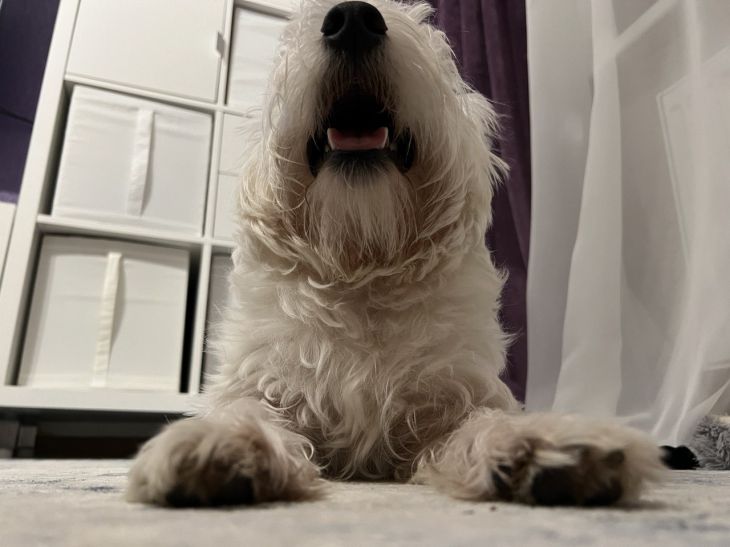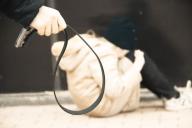Dog behavior can be full of mysteries.
One such intriguing behavioral gesture is the tucked paws. While this may look cute and harmless, it can sometimes be a signal of more serious problems.
From showing contentment and happiness to signs of submission, nervousness, or even body temperature regulation, the reasons can be varied.

We'll try to uncover why dogs tuck their paws, what signals they might be sending, and when this behavior might require veterinary attention.
Comfort and coziness
One of the main reasons why dogs tuck their paws is to find comfort and create a cozy space for themselves.
By curling up and tucking their paws close to their bodies, dogs create a warm and secure environment. This behavior reminds them of their puppy days, when they would snuggle up to each other for warmth and comfort.
Safety and satisfaction
Tucking their paws also gives dogs a sense of security and contentment. By tucking their paws in, they feel protected from potential threats. It is their way of saying that they feel safe and at ease.
Temperature regulation
Dogs are very good at regulating their body temperature, and tucking their paws plays an important role in this process.
By tucking their paws in, they minimize their exposed surface area, helping to conserve body heat in colder temperatures. In hot weather, dogs may tuck their paws in to reduce contact with warm surfaces and keep cool.
Energy saving
Sometimes a dog will tuck its paws in after a long game or a vigorous walk. This behavior serves as a form of energy conservation. Curling up and tucking its paws in helps dogs rest better.
Muscle relaxation
Curling up your paws also helps your dog relax his muscles. Just like humans who curl up to relieve tension, dogs curl up to relieve stress and relax. It’s their natural way of achieving a state of calm.
Nervousness
In some cases, dogs may tuck their paws in response to nervousness or as a submissive gesture. When faced with unfamiliar or frightening situations, dogs may instinctively adopt a more compact posture to show submissiveness and avoid conflict.
Distancing oneself from something
If a dog tucks its paws in when it is near an object or person, it may indicate that it wants to create some physical distance.
By tucking their paws and pulling their bodies closer, dogs create a small barrier between themselves and the nearby irritant. This is their way of maintaining a safe personal space.
Minimizing impact on the body
When it is cold or windy, dogs may tuck their paws in to minimize the impact on their body and protect themselves from the elements. By huddling and tucking their paws in, they reduce heat loss and protect themselves from cold air or gusts of wind.
Feels anxious
In certain situations, dogs tuck their paws in as an instinctive response to increased alertness. When they sense something unusual or potentially dangerous, they may adopt a more compact posture to be ready for action.
My joints hurt
Some dogs tuck their paws in due to joint pain, making it difficult to place their paws on the ground properly. This condition can occur for a variety of reasons, such as neurological problems or injuries.
If you notice persistent paw tucking, accompanied by gait disturbance or mobility problems, it is important to consult a veterinarian for proper diagnosis and treatment.
Typical behavior of some breeds
Some dog breeds, such as greyhounds, are more prone to tucking their legs than others because they have lean bodies and long limbs.
Bulldogs also tend to tuck their paws in because of their massive body. This is a natural tendency that is influenced by their anatomy and instincts.
Habitual behavior
For some dogs, tucking their paws simply becomes a habit over time. If they find the position comfortable and calming, they may continue tucking their paws. It becomes their preferred way of resting, sleeping, or seeking comfort.
Remember that every dog has their own unique personality and behavior, and tucking their paws may be just one of them.
Previously, we wrote about what to do if a hamster prevents you from sleeping at night.








